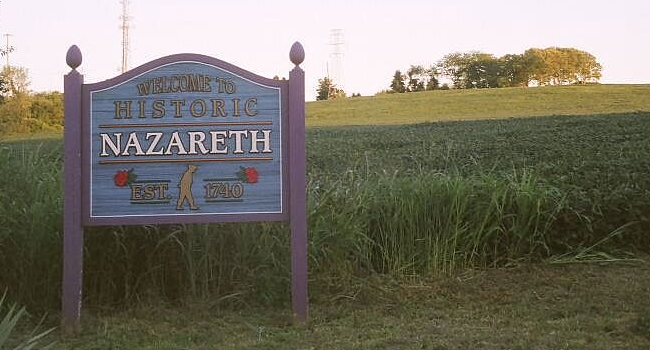In today’s column, we are remembering the Bath Portland Cement Company. The plant was located on the current site of the Keystone Cement Company quarry on Route 329 in East Allen Township.
Recently, this writer received a history of the Bath Portland Cement Company from Mrs. Barbara Wiemann, a historian with the Governor Wolf Historical Society. Mrs. Wiemann graciously allowed us to print her writing and research with our many loyal readers.
Mrs. Wiemann is a graduate of Palmerton High School and Millersville College, where she earned her library certification. She served as librarian at the Easton Area Public Library and the Henry F. Marx Local History Room for 42 years. According to the Easton Area Public Library webpage, the Marx Room contains the largest collection of local history and genealogy in northeastern Pennsylvania. A dedicated librarian, she continues her research with the Governor Wolf Historical Society. In this initial column, Mrs. Wiemann takes you back to the formation of the Bath Portland Cement Company.
The following has been researched and written by Barbara Wiemann.
The Bath Portland Cement Company
East Allen was an agrarian township with 138 farms in 1900. Farmer and farm laborer were the predominant occupations. Two hundred and forty eight dwellings sheltered 1,137 residents; all but 26 were native born. But change was at hand, and East Allen was about to become home to its first large-scale industrial operation.
Franks builds a cement plant
On Dec. 10, 1902, the Pennsylvania State Department issued a charter to the Bath Portland Cement Company of Easton; the new venture had capital of only $1,000. The man directing this endeavor was Fred B. Franks. Although only 32, he had already built and sold a cement mill near Martins Creek.
After attracting investors, in December 1903, BPCC purchased four farms (320 acres) located northeast of the intersection of present day Route 329 and Airport Road.
Construction of a modern cement manufacturing facility began almost immediately. Plans called for a plant constructed of concrete and metal, featuring a steam power plant with a duplicate electric plant. The stack would be 150 feet tall and the kilns 100 feet long.
Plant construction took about 18 months and production began in July 1905. By November, the company was operating day and night at full capacity.
In January 1906, BPCC packed 65,000 barrels, each containing 376 pounds of cement. In November, production reached 3,000 barrels a day. By 1908, BPCC employed 500 men.
The influx of employees created a need for housing and services. A new general merchandise store opened near the plant. BPCC built tenant houses in what was known as East Jacksonville, on current Jacksonville Road. [In 1900, Jacksonville was the intersection of Airport Road and Route 329. When the intersection became known as Franks Corner, named for BPCC founder Fred Franks, the Jacksonville name shifted to the company houses to the east.]
For recreation, the company organized a baseball team.
Quarrying cement
To obtain its cement rock, BPCC operated a large quarry on the property. Indeed, the location of BPCC had been determined by the availability of the raw material. Blasting freed the ore. On April 2, 1908, Mrs. Franks detonated the largest blast in the history of the cement industry up to that time. Workers drilled holes 20 feet from the edge of quarry cliff, 18 feet apart, 70 feet deep, tamped with 20,000 pounds of dynamite. Over 50,000 tons of cement rock were blown loose; the blast cost between $3,000 and $4,000.
In July, Mrs. Franks set off an even larger blast that loosened 100,000 tons of rock. The shock was felt in Easton, 15 miles away. This aggressive blasting was needed to meet a 1 million barrel order, worth $2 million, from Havana, Cuba.
Shareholder dissention
In November 1908, feuding shareholders elected a new management team. The losing shareholders charged mismanagement by the new leaders, and in 1910, after a “long and bitter fight marked by acrimonious debate,” BPCC shareholders ousted the management and named Fred Franks superintendent and general manager. The fight wound its way through the court system. In 1911, the Pennsylvania Supreme Court ruled in favor of the 1908 team. However, perhaps learning a lesson, they retained Franks to run the operation.
In the next column, Mrs. Wiemann shares the growth and expansion of the Bath Portland Cement Company. See you in two weeks.










